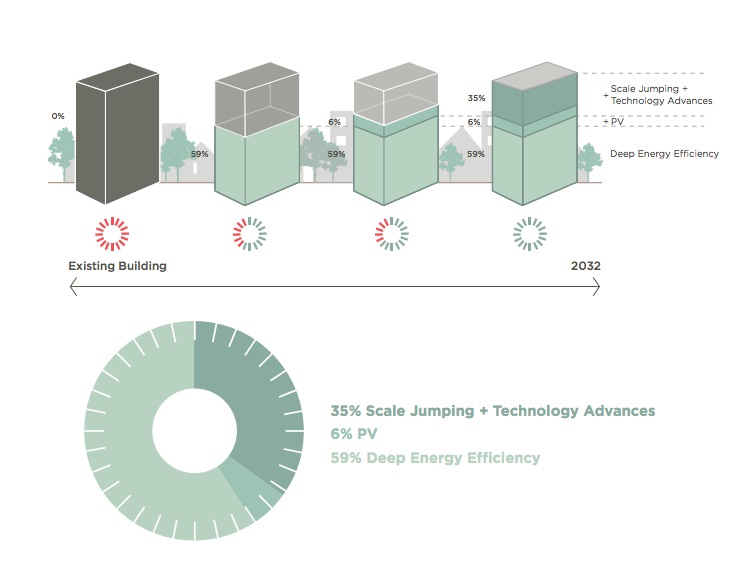The District of Columbia has more green buildings than other large U.S. cities on a per capita basis, according to the 2012 Green Building Report. D.C.’s policies have made it a leader in highly efficient building construction and renovation.
New goals will likely prompt the District to raise the efficiency bar even higher. To help guide policies for a new era of green design, D.C.’s Department of the Environment commissioned a study to assess costs and benefits associated with net zero energy, net zero water, and Living Buildings.
The Net Zero and Living Building Challenge Financial Study: A Cost Comparison Report for Buildings in the District of Columbia was conducted by International Living Future Institute, New Buildings Institute, and Skanska. The team’s analysis identified incremental cost premiums for deep energy and water conservation as well as for photovoltaic and water reuse systems that would bring a project to net zero.
The cost premium for energy efficiency was 1%-12% depending on building type, and rose to 5%-19% for net zero energy. “If the owner has sufficient tax appetite, tax credits and renewable energy credits make the return on investment approximately 30%, whereas the return on investment for energy efficiency alone was in the range of 5-12%,” the report says.
Read the full report at: http://newbuildings.org/net-zero-living-building-challenge-financial-study
Related Stories
Codes and Standards | Feb 22, 2018
GBCI will certify underwriting standard for energy efficiency projects
Investor Ready Energy Efficiency (IREE) certification aims to boost confidence in predicted energy and financial savings.
Codes and Standards | Feb 21, 2018
FEMA document provides simplified seismic design provisions for low-hazard regions
Forty four states have areas defined as low-hazard.
Codes and Standards | Feb 20, 2018
Federal budget includes disaster mitigation provisions
Bipartisan bill encourages states to adopt latest building codes.
Codes and Standards | Feb 19, 2018
Easy access to indoor environment controls yields improved efficiency and workplace productivity
JLL/Purdue University project is developing algorithms to improve indoor comfort.
Codes and Standards | Feb 14, 2018
After Energy Star stopped certifying medical properties, a REIT developed its own certification
Welltower uses internal system to evaluate total building performance.
Codes and Standards | Feb 13, 2018
Rezoning, innovative investor enabling development of a “metroburb” in New Jersey
Indoor mixed-use “Main Street” blossoms in giant former Bell Labs building.
Codes and Standards | Feb 12, 2018
Publication provides insight into managing risk of wind-borne debris damage
Explains how models and data are used to assess the risk of structural damage.
Codes and Standards | Feb 8, 2018
EPA’s Water of the U.S. rule delayed for two years while repeal sought
Controversial Obama-era regulation may never be implemented.
Codes and Standards | Feb 5, 2018
Astrophysicist turns his skills toward identifying and predicting location of vacant buildings
Project could help Baltimore and other cities redevelop blighted properties.
Codes and Standards | Feb 5, 2018
Denver’s new green roof mandate raises implementation policies
Voter initiative left many details undecided.

















